Bryan C Jacobs
age ~59
from Sykesville, MD
- Also known as:
-
- Bryan Charles Jacobs
- Phone and address:
- 6407 Taper Ct, Eldersburg, MD 21784
Bryan Jacobs Phones & Addresses
- 6407 Taper Ct, Sykesville, MD 21784
- Ellicott City, MD
- Baltimore, MD
- Springfield, PA
Work
-
Company:Lunarline, incJul 2013
-
Position:Senior information assurance engineer
Education
-
School / High School:Capella University- Minneapolis, MN2011
-
Specialities:M.S. in Information Technology
Resumes

Salesforce Analyst At Ubm Canon
view sourcePosition:
Salesforce Analyst at UBM Canon
Location:
Los Angeles, California
Industry:
Marketing and Advertising
Work:
UBM Canon - Santa Monica, CA since Jun 2013
Salesforce Analyst
Attorneys Corporation Service, Inc. - Commerce, CA 2012 - 2012
Salesforce Analyst & IT Director
Freelancer - Greater Los Angeles Area Apr 2011 - Jun 2012
Marketing & CRM Consultant
ConnectAndSell, Inc Oct 2010 - Apr 2011
Customer Success Manager
Aruba Networks Nov 2008 - Jan 2010
Business Process Analyst
Salesforce Analyst
Attorneys Corporation Service, Inc. - Commerce, CA 2012 - 2012
Salesforce Analyst & IT Director
Freelancer - Greater Los Angeles Area Apr 2011 - Jun 2012
Marketing & CRM Consultant
ConnectAndSell, Inc Oct 2010 - Apr 2011
Customer Success Manager
Aruba Networks Nov 2008 - Jan 2010
Business Process Analyst
Education:
University of Arizona 1999 - 2003
BS, Journalism University of Arizona
BS, Journalism University of Arizona
Skills:
Salesforce.com
SaaS
Enterprise Software
Cloud Computing
Channel
Demand Generation
Lead Generation
Sales Process
Marketing Automation
Direct Sales
Account Management
Start-ups
Sales
Solution Selling
Sales Management
B2B
SaaS
Enterprise Software
Cloud Computing
Channel
Demand Generation
Lead Generation
Sales Process
Marketing Automation
Direct Sales
Account Management
Start-ups
Sales
Solution Selling
Sales Management
B2B

Bryan Ruth Jacobs
view source
Salesperson - Vallen
view sourceWork:
Salesperson - Vallen

Sales Executive
view sourceWork:
Sales Executive

Bryan Jacobs
view source
Bryan Jacobs
view source
Bryan Jacobs
view source
Bryan Jacobs
view sourceLocation:
United States
Name / Title
Company / Classification
Phones & Addresses
Owner
Villain Racing
Whol Racing Car Parts
Whol Racing Car Parts
8 Holliben Ct, Severna Park, MD 21146
Data Center Analyst
United States Dept of Commerce
Information Research · Administrative General Economic Programs · Develops Local Economies
Information Research · Administrative General Economic Programs · Develops Local Economies
1401 Cnstn, Washington, DC 20230
1401 Constitution Ave NW, Washington, DC 20230
2024824656, 2024820543, 2024824143
1401 Constitution Ave NW, Washington, DC 20230
2024824656, 2024820543, 2024824143
Director - Government Relations
The Home Depot Inc
Adm Services
Adm Services
101 Constitution Ave NW, Washington, DC 20001
2027722497
2027722497
MHP-5 HOLDINGS, LLC
DAS INVESTMENTS, LLC
METRO HOSPITALITY FUND, LLC
METRO HOSPITALITY MANAGEMENT, LLC
SYMMES SQUARE INVESTMENTS, LLC
Us Patents
-
Magnetic Sensor System For Fast-Response, High Resolution, High Accuracy, Three-Dimensional Position Measurements
view source -
US Patent:6789043, Sep 7, 2004
-
Filed:Sep 23, 1999
-
Appl. No.:09/401701
-
Inventors:Carl V. Nelson - Rockville Road MD
Bryan C. Jacobs - Sykesville MD -
Assignee:The Johns Hopkins University - Baltimore MD
-
International Classification:G01B 714
-
US Classification:702152, 702 38, 702 57, 702 65, 702 94, 702127, 702150
-
Abstract:The position, orientation, velocity and acceleration of remote sensors is determined using magnetic fields. Multiple, arbitrarily oriented magnetic field transmitters are placed in one reference frame (source reference frame), and multiple, arbitrarily oriented magnetic field receivers are placed in a second reference frame (body reference frame). The spatially varying magnetic fields of the transmitters in the source reference frame are sensed by the magnetic field receivers in the body reference frame. The computer algorithm uses a physics-based extended Kalman filter to resolve the position; orientation, velocity and acceleration of the body relative to the source reference frame. The physics-based extended Kalman filter can accommodate the effects of metal in the source and body reference frames and thus allow the system to measure position, orientation, velocity and acceleration under conditions where eddy currents would normally hinder other magnetic position measuring systems. The Kalman filter also allows the use of multiple transmitters and receivers distributed over an arbitrarily large sensing volume, thereby extending the useful range and accuracy of the system. Further, the Kalman filter allows the use of high-speed measurements with minimal signal averaging, thus extending the useful dynamic response of the system.
-
Techniques For Quantum Processing With Photons And The Zeno Effect
view source -
US Patent:6995404, Feb 7, 2006
-
Filed:Jun 29, 2004
-
Appl. No.:10/879853
-
Inventors:James D. Franson - Ellicott City MD, US
Bryan C. Jacobs - Sykesville MD, US
Todd B. Pittman - Ellicott City MD, US -
Assignee:The Johns Hopkins University - Baltimore MD
-
International Classification:H01L 29/22
-
US Classification:257 98, 257 79, 359107, 359108, 708191, 708816, 708831
-
Abstract:Techniques are provided that use the quantum Zeno effect to implement practical devices that use single photons as the qubits for quantum information processing. In the quantum Zeno effect, a randomly-occurring event is suppressed by frequent measurements to determine whether the event has occurred. The same results can be obtained by using atoms or molecules or ions to react to the occurrence of the event. Techniques include directing one or more input qubits onto a device and applying a quantum Zeno effect in the device. The quantum Zeno effect is applied by consuming one or more photons in the device under conditions in which photons, that would otherwise be output by the device, do not represent a result of a particular quantum information processing operation. Devices implemented using the quantum Zeno effect can operate with low error rates without the need for high efficiency detectors and large number of ancilla.
-
Techniques For High Fidelity Quantum Teleportation And Computing
view source -
US Patent:7006267, Feb 28, 2006
-
Filed:Aug 28, 2003
-
Appl. No.:10/651317
-
Inventors:James D. Franson - Ellicott City MD, US
Michelle M. Donegan - Columbia MD, US
Michael J. Fitch - Catonsville MD, US
Bryan C. Jacobs - Sykesville MD, US
Todd B. Pittman - Catonsville MD, US -
Assignee:The Johns Hopkins University - Baltimore MD
-
International Classification:G06E 3/00
-
US Classification:359107, 708191, 380278
-
Abstract:Techniques for high fidelity quantum teleportation include receiving an input photon representing a qubit. Ancilla photons are generated in a particular ancilla quantum state chosen to reduce a rate of error below a threshold error rate. The ancilla and the input photon are combined to populate output channels. A number of photons representing logical value 1 are measured in a subset of the output channels. A particular output channel is determined based on the measured number of photons. A teleported photon is obtained at the particular output channel with an error rate below the threshold error rate. These techniques allow the ancilla quantum state to be chosen to minimize the error despite the presence of losses and noise. Quantum logic operations are performed by teleporting two input qubits with the quantum state of the ancilla chosen to produce the desired logical result and reduce the error.
-
Method And Apparatus For Single-Photon Source And Quantum Memory
view source -
US Patent:7019875, Mar 28, 2006
-
Filed:Aug 12, 2003
-
Appl. No.:10/639559
-
Inventors:Todd B. Pittman - Catonsville MD, US
James D. Franson - Ellicott City MD, US
Bryan C. Jacobs - Sykesville MD, US -
Assignee:The John Hopkins University - Baltimore MD
-
International Classification:G06E 3/00
-
US Classification:359107, 359108, 708191
-
Abstract:An optical switch and optical storage loop are used as the basis of a single-photon source and a quantum memory for photonic qubits. To operate as a single-photon source, the techniques include a source of a pair of photons, such as a parametric down-conversion crystal, which is known to emit photons in pairs. The detection of one member of the pair activates the switch, which re-routes the other member into the storage loop. The stored photon is then known to be circulating in the loop, and can be switched out of the loop at a later time chosen by the user, providing a single photon for potential use in a variety of quantum information processing applications. To operate as a quantum memory for photonic qubits, a single-photon in an arbitrary initial polarization state is coherently stored in the loop, and coherently switched out of the loop when needed.
-
Techniques For Use Of Nanocavities To Enhance Quantum Processing With Photons And The Zeno Effect
view source -
US Patent:7236667, Jun 26, 2007
-
Filed:Jan 31, 2006
-
Appl. No.:11/343409
-
Inventors:James D. Franson - Ellicott City MD, US
Bryan C. Jacobs - Sykesville MD, US
Todd B. Pittman - Columbia MD, US -
Assignee:The Johns Hopkins University - Baltimore MD
-
International Classification:G02B 6/34
G06E 1/04
H01L 33/00 -
US Classification:385 37, 708191, 708250, 708816, 257 79, 257 98, 369107, 369108
-
Abstract:Techniques are provided for placing atoms inside an appropriate nanocavity for enhancing two-photon absorption and quantum information processing based on the Zeno effect. Techniques for fabricating suitable nanocavities include: 1) a short length of optical fiber polished on the ends with the ends coated to form suitable mirrors; 2) a continuous length of fiber with the equivalent of mirrors being formed within the fiber using Bragg gratings; 3) a single filament of glass (such as fused silica) being suspended between two mirrors (without any cladding) and surrounded by an atomic vapor, solid, or liquid; 4) a small glass sphere (such as fused silica) that has been melted on the end of an optical fiber; and 5) a small toroid (ring) of glass bent in a circle surrounded by suitable atoms.
-
Techniques For Performing Logic Operations Using Quantum States Of Single Photons
view source -
US Patent:20030086138, May 8, 2003
-
Filed:Nov 1, 2002
-
Appl. No.:10/286735
-
Inventors:Todd Pittman - Catonsville MD, US
James Franson - Ellicott City MD, US
Bryan Jacobs - Sykesville MD, US -
International Classification:G02F003/00
-
US Classification:359/108000
-
Abstract:A method and apparatus for performing logic operations using quantum polarization states of single photons, include a first polarizing beam splitter having first input spatial modes and first output spatial modes for a first set of orthogonal polarizations. A second polarizing beam splitter has a second input spatial mode and second output spatial modes for a second set of orthogonal polarizations. The second set of orthogonal polarizations is different from the first set. The second input spatial mode is aligned with a first detected output spatial mode. A single photon detector of multiple single photon detectors is disposed along each one of the second output spatial modes. A first device output carries an output photon based in part on a number of photons detected by the single photon detectors. Such logic operations may be used in quantum computers for quantum information processing.
-
Method And Apparatus For Single-Photon Source And Quantum Memory
view source -
US Patent:20060164706, Jul 27, 2006
-
Filed:Mar 27, 2006
-
Appl. No.:11/390028
-
Inventors:Todd Pittman - Catonsville MD, US
James Franson - Ellicott City MD, US
Bryan Jacobs - Sykesville MD, US -
International Classification:G06E 3/00
-
US Classification:359107000, 359108000
-
Abstract:An optical switch and optical storage loop are used as the basis of a single-photon source and a quantum memory for photonic qubits. To operate as a single-photon source, the techniques include a source of a pair of photons, such as a parametric down-conversion crystal, which is known to emit photons in pairs. The detection of one member of the pair activates the switch, which re-routes the other member into the storage loop. The stored photon is then known to be circulating in the loop, and can be switched out of the loop at a later time chosen by the user, providing a single photon for potential use in a variety of quantum information processing applications. To operate as a quantum memory for photonic qubits, a single-photon in an arbitrary initial polarization state is coherently stored in the loop, and coherently switched out of the loop when needed.
-
Embedded Authentication Protocol For Quantum Key Distribution Systems
view source -
US Patent:20130315395, Nov 28, 2013
-
Filed:May 25, 2012
-
Appl. No.:13/480554
-
Inventors:Bryan C. Jacobs - Sykesville MD, US
-
Assignee:THE JOHNS HOPKINS UNIVERSITY - Baltimore MD
-
International Classification:H04L 9/08
H04L 9/00 -
US Classification:380278, 380 44
-
Abstract:In methods and systems to authenticate systems in a quantum key distribution environment based on limited disclosures and identical, re-usable, pre-provisioned authentication keys, each system constructs an encryption key based on a corresponding one of transmitted events and detected events. Basis-sifting, error detection, error correction, and/or privacy amplification (PA) may be performed on the encryption keys based on limited disclosures (e.g., detection interval information, basis-sifting information, associated detection basis information, and/or parity measures). The authenticated keys may be modified based on disclosed detection information. Error detection and/or PA may be performed with identical pre-provisioned algorithms and pseudo-random values generated from the authenticated keys or modified authenticated keys. Final authenticated encryption keys are selectively constructed depending upon an extent of detected errors. Construction of authenticated encryption keys indicates authentication of the systems. None of the pre-provisioned authentication keys or modified authentication keys is disclosed and may thus be reused.
License Records
Bryan John Jacobs Md
License #:
29116 - Active
Category:
Medicine
Issued Date:
Mar 1, 2016
Effective Date:
Mar 1, 2016
Expiration Date:
Oct 1, 2018
Type:
Physician
Classmates

Bryan Jacobs
view sourceSchools:
Calvary Baptist School New Orleans LA 2000-2004
Community:
Robbie Stewart, Crystal Robbins, Julia East, Gregory Johnson, Valerie Davis, Elizabeth Randon

Bryan Jacobs
view sourceSchools:
Rogers High School Puyallup WA 1990-1994
Community:
Tony Cables, Patrick Mckillip, Rhonda Peck

Bryan Jacobs
view sourceSchools:
H.W. Smith Junior High School Syracuse NY 1977-1978, Binictican Elementary School Subic Bay OR 1978-1980, Crockett Middle School Paris TX 1983-1984
Community:
Donna Little, Jean Buckhout, Wende Pusch

Bryan Jacobs
view sourceSchools:
Cypress Lake High School Ft. Myers FL 1979-1983
Community:
Lynn Capirci, Robert Campbell

Bryan Jacobs
view sourceSchools:
Shawnee Mission West High School Shawnee Mission KS 1990-1994
Community:
Sandy Dulmage, Angie Higgins, Brandee Bell, Wendy Pickett, Julene Stanton, Joseph Stalnaker, Sandi Ramm, Rachel Jensen

Bryan Jacobs, Lake Forest...
view source
Bryan Jacobs | Hartwood E...
view source
Bryan Jacobs | Franklin C...
view sourceOther Social Networks

Bryan Jacobs Google+
view sourceNetwork:
GooglePlus
Bryan Jacobs - - Real Estate and Facilities Management - - Southern California - As a Principal and Managing Director at Jones Lang LaSalle, I have a focus ...
Youtube
Myspace
Googleplus
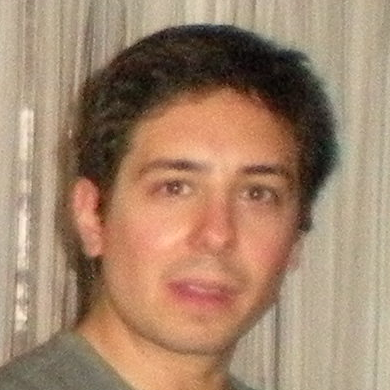
Bryan Jacobs
Work:
Marin Software - Director of Engineering
Education:
Carnegie Mellon University - ETC

Bryan Jacobs
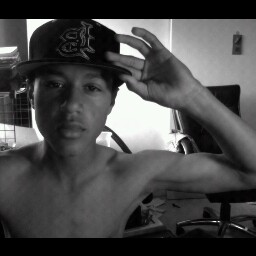
Bryan Jacobs

Bryan Jacobs

Bryan Jacobs
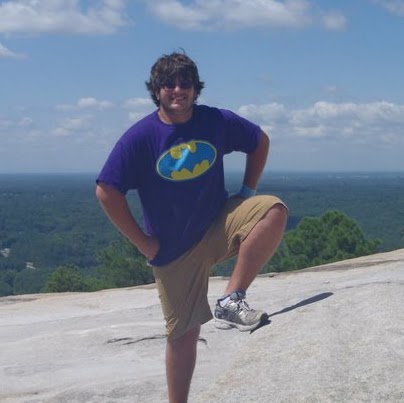
Bryan Jacobs

Bryan Jacobs

Bryan Jacobs

Starr N Bryan Jacobs
view source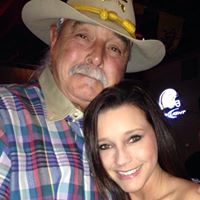
John Bryan Jacobs
view source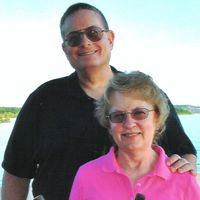
Diane Bryan Jacobs
view source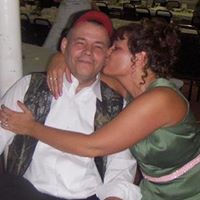
Bryan Jacobs Sr.
view source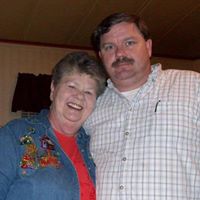
Bryan Jacobs
view source
Jake Bryan Jacobs
view source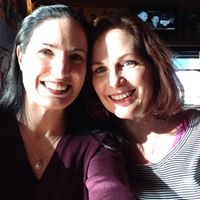
Rena Bryan Jacobs
view source
Cristy Bryan Jacobs
view sourcePlaxo

Bryan Jacobs
view sourceSouthern California

Bryan Jacobs
view sourceJ V Associates
Get Report for Bryan C Jacobs from Sykesville, MD, age ~59












